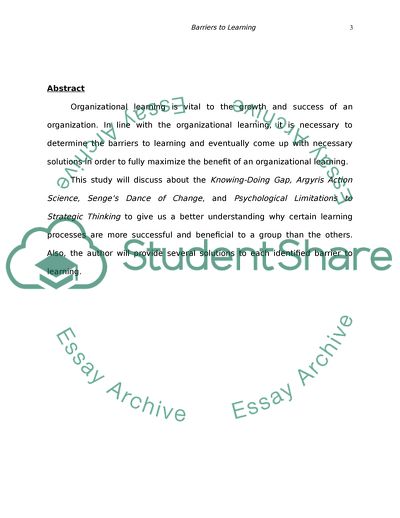Cite this document
(Barriers to Learning Coursework Example | Topics and Well Written Essays - 3000 words, n.d.)
Barriers to Learning Coursework Example | Topics and Well Written Essays - 3000 words. https://studentshare.org/education/1707769-barriers-to-learning
Barriers to Learning Coursework Example | Topics and Well Written Essays - 3000 words. https://studentshare.org/education/1707769-barriers-to-learning
(Barriers to Learning Coursework Example | Topics and Well Written Essays - 3000 Words)
Barriers to Learning Coursework Example | Topics and Well Written Essays - 3000 Words. https://studentshare.org/education/1707769-barriers-to-learning.
Barriers to Learning Coursework Example | Topics and Well Written Essays - 3000 Words. https://studentshare.org/education/1707769-barriers-to-learning.
“Barriers to Learning Coursework Example | Topics and Well Written Essays - 3000 Words”. https://studentshare.org/education/1707769-barriers-to-learning.


